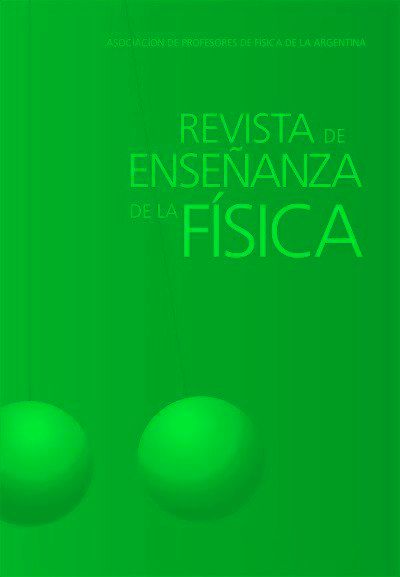Active Learning of Physics and Rasch analysis for electrical circuits using physlets
DOI:
https://doi.org/10.55767/2451.6007.v33.n2.35284Keywords:
Active Learning of Physics, Electrical circuits, Rasch modelAbstract
We show some research results in Physics Education on Rasch analysis and Active Learning of electrical circuits using physlets, with
high school students from the National Polytechnic Institute of Mexico. Active Learning methodologies are important, because
there are good results in the literature on their implementation at different educational levels. In addition, using physlets is a way
to innovate the physics class, and the Rasch model helps us to appreciate the progress that students are making in their knowledge
of electrical circuits, using an active teaching methodology in the classroom.
References
Abad F. J., Olea, J., Aguado, D., Ponsoda, D., Barrada, J. R. (2010). Deterioro de parámetros de los ítems en test
adaptativos informatizados: estudio con eCAT. Psicothema, 22(2), 340-347.
Amadeu, R., Leal, J. (2013). Ventajas del uso de simulaciones por ordenador en el aprendizaje de la Física. Enseñanza
de las Ciencias, 31(3). 177-188.
Andersen, E. B., Olsen, L. W. (2001). Chapter 1: The Life of Georg Rasch as a Mathematician and as a Statistician. In
Boomsma, A., van Duijn, M. A. J., Snijders, T. A. B. (Editors), Essays on Item Response Theory, New York: Springer
Sience+Business Media LLC, pp. 3-24.
Azariadis, C., Drazen, A. (1990). Threshold Externalities in Economic Development. Quaterly Journal of Economics,
Cambridge, The Massachusetts Institute of Technology Press, 105, 501-526.
Baker, F. B. y Kim, S. H. (2017). The Basics of Item Response Theory Using R, Switzerland: Springer Nature.
Boomsma, A., van Duijn, M. A. y Snijders, T. A. (2001). Essays on item response theory. New York, NY: Springer-Verlag.
Cran, (2021). The R Project for Statistical Computing. [Online]. Disponible en: htpps://www.r-project.org. (Visitado el
15 de enero de 2021).
Formica, S. (2012). A Medley of Successful Active-Learning Methods. Interdisciplinary STEM Teaching & Learning
Conference (2012-2019). 57. Disponible en: https://digitalcommons.georgiasouthern.edu/stem/2012/2012/57.
(Visitado el 15 de agosto de 2021).
Leo-Revilla, A. (2021). Breve historia de R. [Online]. Disponible en: https://momentotic.com/2013/08/07/brevehistoria-de-r/. (Visitado el 15 de enero de 2021).
Liu, X., & Collard, S. (2005). Using the Rasch model to validate stages of understanding the energy concept. J. Appl.
Meas. 6(2), 224-41.
Mintzes, J. J. y Walter, E. M. (2020). Active learning in college science: The case of evidence-based practice. Cham,
Switzerland: Springer Nature.
Orozco Martínez, J. (2012). El aprendizaje activo de la Física en los cursos en línea del IPN. Revista Mexicana de
Bachillerato a Distancia, 4(7), 71-77.
Planinic, M. Boone, W. J., Susac, A. and Ivanjek, L. (2019). Rasch analysis in physics education research: Why
measurement matters. Physical Review Physics Education Research, 15, 020111.
Prieto, G., Delgado, A. (2003). Análisis de un test mediante el modelo de Rasch, Psicothema, 15(1). 94-100.
Rost, J. (2001). Chapter 2: The Growing Family of Rasch Models, in Essays on Item Response Theory. In Boomsma, A.,
van Duijn, M. A. J., Snijders, T. A. B. (Editors). Essays on Item Response Theory, New York: Springer Sience+Business
Media LLC, pp. 25-44.
Sokoloff, D. R., Thornton, R. K. y Laws, P. W. (1998). Realtime physics, active learning laboratories, module 1:
Mechanics. New York: Wiley.
Sokoloff, D. R., & Thornton, R. K. (2006). Interactive lecture demonstrations, active learning in introductory physics.
New York: Wiley.
Sirur Flores, J. & Benegas, J. (2008). Aprendizaje de circuitos eléctricos en el nivel polimodal: resultados de distintas
aproximaciones didácticas, Enseñanza de las Ciencias, 26(2). 245–256.
Sokoloff, D. R. y Laws, P. W. (2012). Realtime physics, active learning laboratories, module 3: Electricity & magnetism.
New York: Wiley.
Downloads
Published
Issue
Section
License
Copyright (c) 2021 César Mora, Marco Antonio Moreira, Jesús Ángel Meneses-Villagrá

This work is licensed under a Creative Commons Attribution-NonCommercial-NoDerivatives 4.0 International License.
Aquellos autores/as que tengan publicaciones con esta revista, aceptan los términos siguientes:Los autores/as conservarán sus derechos de copiar y redistribuir el material, bajo los términos estipulados en la Licencia de reconocimiento, no comercial, sin obras derivadas de Creative Commons que permite a terceros compartir la obra bajo las siguientes condiciones:
- Reconocimiento — Debe reconocer adecuadamente la autoría, proporcionar un enlace a la licencia e indicar si se han realizado cambios. Puede hacerlo de cualquier manera razonable, pero no de una manera que sugiera que tiene el apoyo del licenciador o lo recibe por el uso que hace.
- NoComercial — No puede utilizar el material para una finalidad comercial.
- SinObraDerivada — Si remezcla, transforma o crea a partir del material, no puede difundir el material modificado.
- Los autores/as podrán adoptar otros acuerdos de licencia no exclusiva de distribución de la versión de la obra publicada (p. ej.: depositarla en un archivo telemático institucional o publicarla en un volumen monográfico) siempre que se indique la publicación inicial en esta revista.
- Se permite y recomienda a los autores/as difundir su obra a través de Internet (p. ej.: en archivos telemáticos institucionales o en su página web) antes y durante el proceso de envío, lo cual puede producir intercambios interesantes y aumentar las citas de la obra publicada. (Véase El efecto del acceso abierto).










